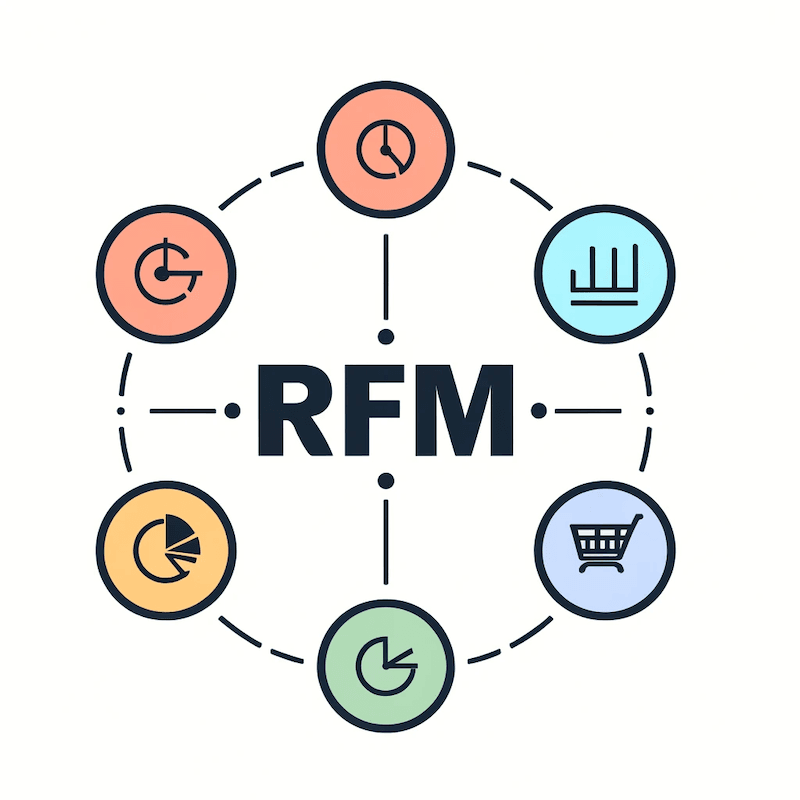
Blending RFM with Customer Lifetime Value (CLV)
One of the best ways to get more out of RFM analysis is by integrating it with Customer Lifetime Value (CLV). While RFM tells you about past behaviors, CLV gives you a forecast of future behaviors. Together, they paint a complete picture of your customers.
At my previous gig with XYZ Fashion, we had this customer who scored high on RFM but hadn’t been around for a bit. By calculating her CLV, we realized she was still worth a lot over the long haul. So, we offered her an exclusive loyalty program with perks just for her. She came back and spent even more than before!
Here’s how you can think about it:
- Identify High-Value Customers: Use RFM to find those who are currently valuable.
- **Predict ** Future Value : Apply CLV to see their potential future spending.
- Tailor Your Approach: Develop personalized offers and loyalty programs based on their predicted value.
Combining RFM with Cohort Analysis
Cohort analysis is another fantastic method to use alongside RFM. Cohort analysis groups customers based on shared characteristics or behaviors over a specific time period. This method helps you see how different groups of customers behave over time.
I remember working with a tech e-commerce company where we used cohort analysis to track customer behavior post-purchase. By combining this with RFM, we noticed that customers who bought certain types of products had higher repeat purchase rates. So, we targeted these cohorts with specific marketing campaigns and saw a significant increase in repeat purchases.
Think about it like this:
- Group Your Customers: Use cohort analysis to segment customers by their purchase dates or product types.
- Analyze Behavior Over Time: Look at how these cohorts behave over weeks or months.
- Integrate with RFM: Use RFM to drill down further into each cohort, identifying high-value customers and tailoring your strategies accordingly.
Integrating RFM with Predictive Analytics
Predictive analytics can take your RFM analysis to the next level by helping you anticipate future customer actions. Using machine learning algorithms, you can predict which customers are likely to churn, which ones might become high spenders, and more.
Back at ABC Retail, we used predictive analytics to forecast which high-RFM-score customers were at risk of churning. We then created targeted retention campaigns, like personalized discounts and early access to sales, which significantly reduced our churn rates.
Here's the approach in a nutshell:
- Data Collection: Gather extensive customer data, including their RFM scores.
- Model Building: Use machine learning to build models that predict future customer behavior.
- Actionable Insights: Develop strategies based on these predictions to engage at-risk customers or upsell to potential high spenders.
Applying RFM with Market Basket Analysis
Market basket analysis helps you understand the products that customers frequently buy together. When combined with RFM, you can identify high-value customers and understand their buying patterns in more detail.
In a project with an online grocery store, we used market basket analysis to find that high-RFM-score customers often bought organic and gourmet items together. We then bundled these products and offered a special discount, which boosted sales and customer satisfaction.
Here’s how you can do it:
- Analyze Purchase Patterns: Use market basket analysis to see which products are commonly bought together.
- Target High-Value Customers: Apply these insights to your high-RFM-score customers.
- Create Bundles and Offers: Develop product bundles and targeted promotions to enhance the shopping experience.
Wrapping Up
Combining RFM analysis with other analytical methods opens up a world of opportunities to understand and engage your customers better. Whether it's forecasting future value with CLV, tracking behaviors over time with cohort analysis, predicting future actions with machine learning, or understanding buying patterns with market basket analysis, these integrations can significantly enhance your marketing strategies.
Remember, the key is to stay curious and creative. The more you learn about your customers, the better you can serve them and keep them coming back.
I hope these insights inspire you to experiment and find what works best for your business. If you have any questions or want to share your own experiences, feel free to reach out. Happy analyzing!

